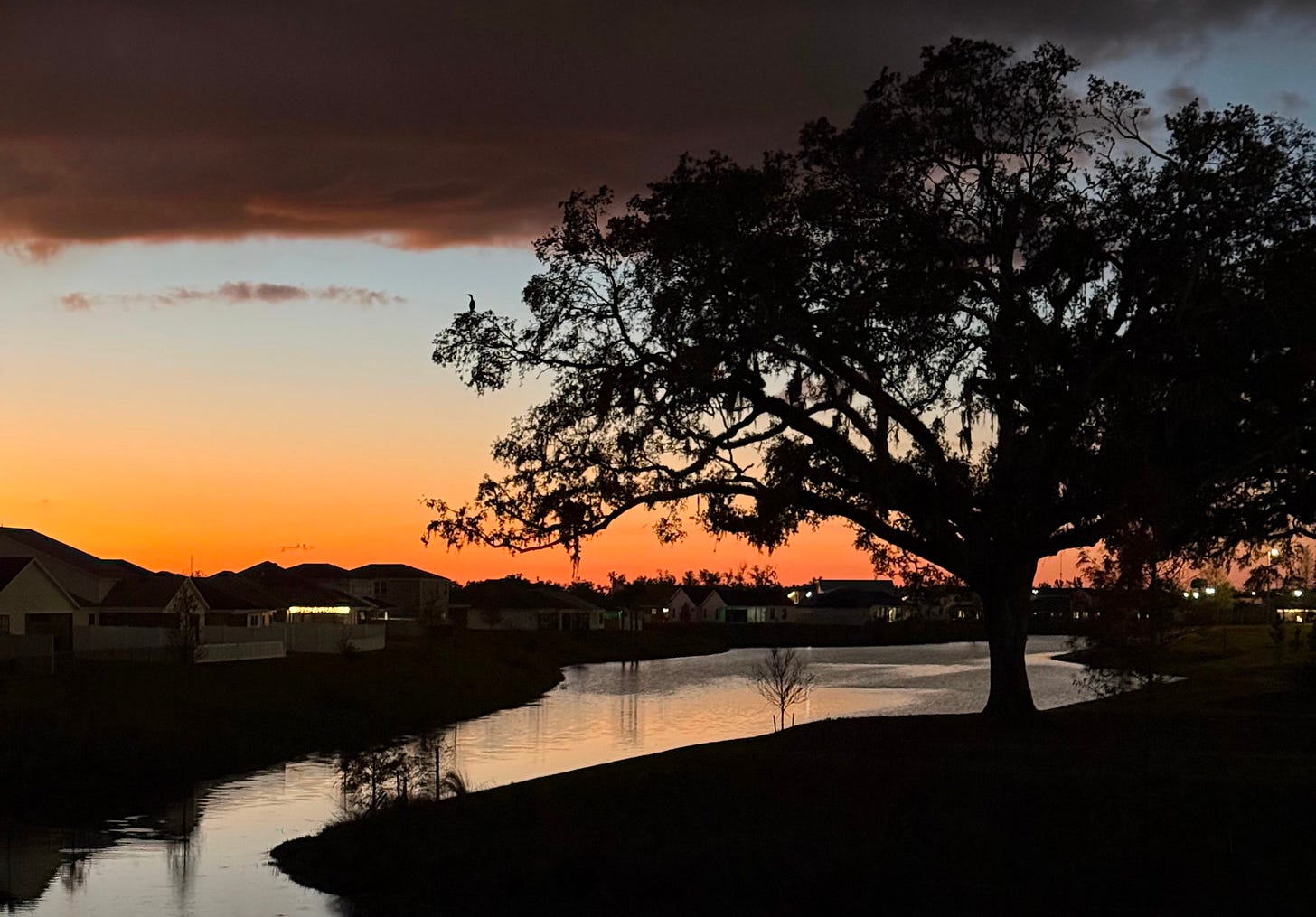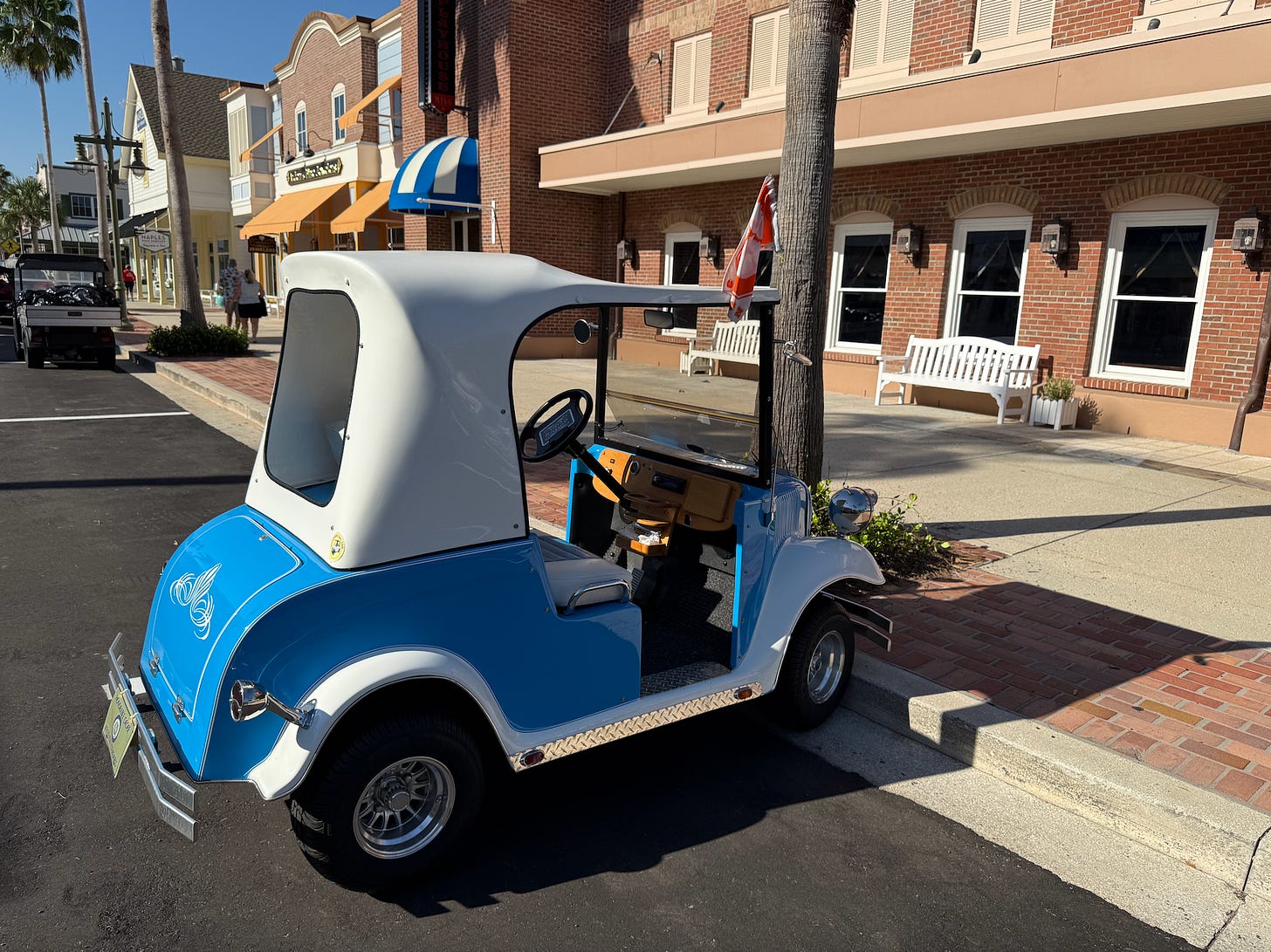What We're Still Getting Wrong About Aging
Insights From My Work and Life Inside the World's Largest Retirement Community
When I moved to The Villages, a Florida retirement town best known for golf carts, social clubs, and many myths, I figured I’d be the anomaly.
I’m in my 40s. Still working full-time in tech. And I’m not retired yet.
If you missed the backstory, you can read the first three parts of this series: Not Retired Yet: My Life in The Villages at 40-something, Welcome to Leisureville, U.S.A., and Belonging at the Wrong Age.
But my neighbor Jalen? He isn’t retired either despite serving as a federal law enforcement officer who hit the mandatory retirement age at 57.
Now age 59, he recently left one of the traditional villages within the larger development to move to Middleton by The Villages. It’s the new, multi-generational neighborhood where I live.
In his words, he and his wife wanted a slightly different vibe and energy.
He’s not slowing down. He’s leveling up by focusing on a new endeavor as a small business coach. Jalen’s one example that folks over age 50 are thinking differently about later stages of life.
Why My Work Makes This Personal
I work in user experience (UX) design. That means I help teams build digital products (apps, websites, services) that actually make sense for the people who use them. It’s part research, part strategy, part problem-solving.

Before moving here, I worked remotely from Chicago. Now I live and work remotely from a place with 150,000 older adults using technology.
Over breakfast the other day, two women in their 70s were discussing the various ways they were using AI. They had so many great ideas, I was typing notes into my phone while eavesdropping.
For me, this isn’t professional curiosity. I’m immersed in it. And what I’m seeing up close is reshaping how I think about aging and design — especially the assumptions that shape both.
The Problem With “Designing for Decline”
In tech design, ageism isn’t usually overt. No one’s writing “ignore older people” on a whiteboard. It often comes wrapped in good intentions through things such as accessibility audits, extra help text, simplified interfaces.
But here’s the issue. When we assume all individuals over 50 are a static population defined by deficits (less capable, less curious, less relevant), we design experiences that talk down, over-explain, or outright exclude.
I’ve seen it firsthand.
At one company, a VP of Design told our team to “just focus on Gen Z.” That didn’t add up, especially since our most active users were over 50.
I later learned about a UX research study with a 62-year-old Marketing Director who was navigating a complex investment app. She moved through it easily until she hit one feature with a message that read:
“Don’t worry. We’ll guide you through this step-by-step!”
She immediately abandoned the task.
Her feedback?
“This talks to me like I’m confused. I manage a $13 million advertising budget. I can assure you I’m not confused.”
That stuck with me. It wasn’t just a bad copy decision. It was unintentionally baked-in condescension, disguised as help.
What I’m Seeing Instead
Living here has opened my eyes.
Yes, The Villages has golf carts and more pickleball courts than you can count. But it also has people like Jalen. He’s mentoring young, small business owners. Why? Because it personally gives him purpose, connection, and growth.
In my profession, we’ve often assumed older adults are winding down. But what I see here every day is that people are ramping up in ways that are relevant to them as unique individuals.
I’ve met:
A 70-something artist launching an online store
A retired engineer leading a robotics club
A couple in their 60s taking improv classes and filming YouTube videos with a fairly large following
They’re not “declining.” They’re redefining.
Systems Are Broken, Not Users
The deeper issue is that this is systemic.
We design for youth because we market to youth. We value speed and novelty over wisdom and depth. And we rarely put ourselves in proximity to older adults unless we’re forced to (through family, caregiving, or community shifts).
The result?
Missed innovation. Products that alienate or insult. A cultural blind spot that underestimates 100 million Americans over 50.
And the real shame? We need older adults more than ever.
In an era defined by AI, demographic shifts, and increased longevity, experience is a strategic advantage, not a liability.
The Opportunity We’re Missing
If we stop designing from assumptions about age and start designing with older adults, we unlock something powerful.
Not just more inclusive products. But more resilient ones.
Not just better usability. But better vision.
Rethinking the “decline narrative” isn’t just good ethics. It’s good strategy.
And if you spend time here in The Villages, you’ll see it for yourself.

The future of aging isn’t beige. It’s bold and vibrant.
So Let Me Ask You This
Where in your life, work, or thinking might you still assume aging means decline?
And what would you do differently if you stopped?
Let me know in the comments.
Or, share a story of someone you know that’s age 50-100. I’d love to know what they’re building, learning, or dreaming about right now.
Until next time,
Rethink Aging With Us
This is for you:
If you’re in your 30s, 40s, 50s, or beyond and not ready to fade out.
If you’re a builder, strategist, or decision-maker trying to understand what aging really means for your product, team, city, or community.
If you’re tired of “decline narratives” about age and are ready for something more honest, more useful, and more human.
Join other curious and forward-thinking people who are reconsidering what older age can be — and how to live it with intention.
Share age/proof design
Enjoyed this issue? Please forward this to friends or share by clicking below:




This is terrific!
My mom is prime example of an older person that is still very much on the move. At 83 she still lives alone on her own property outside of Brisbane Australia, stays very busy with her friends and within her church community, has her own radio show, plays several instruments (in groups and alone), and a few months ago started learning to play the cello!
I'm grateful to have such great genes! It gives me hope that I can live as vibrantly in the second half of my life. That's what I'm working on...
So much truth in your article Bryan.